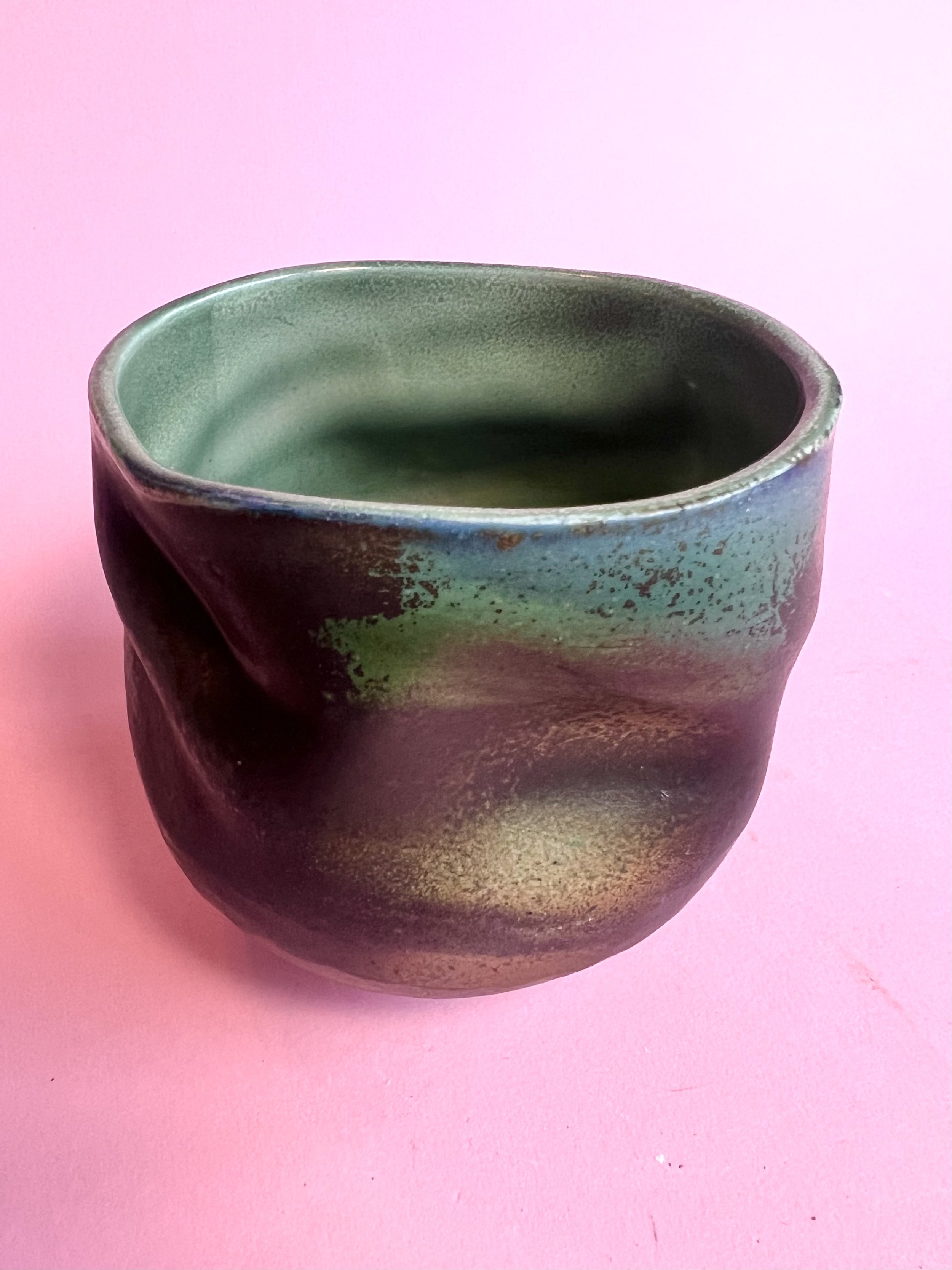 Image 1 of 8
Image 1 of 8

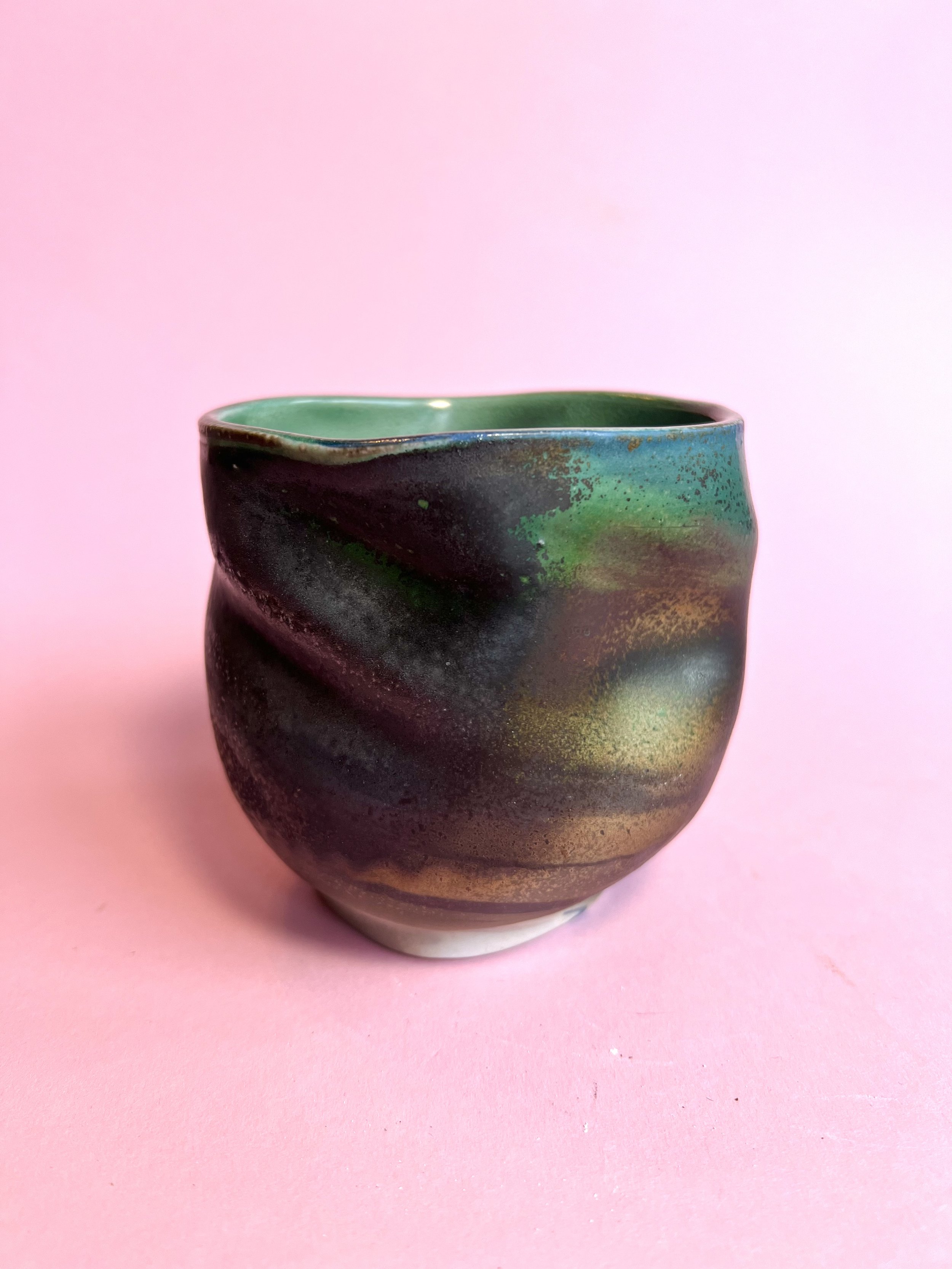 Image 2 of 8
Image 2 of 8

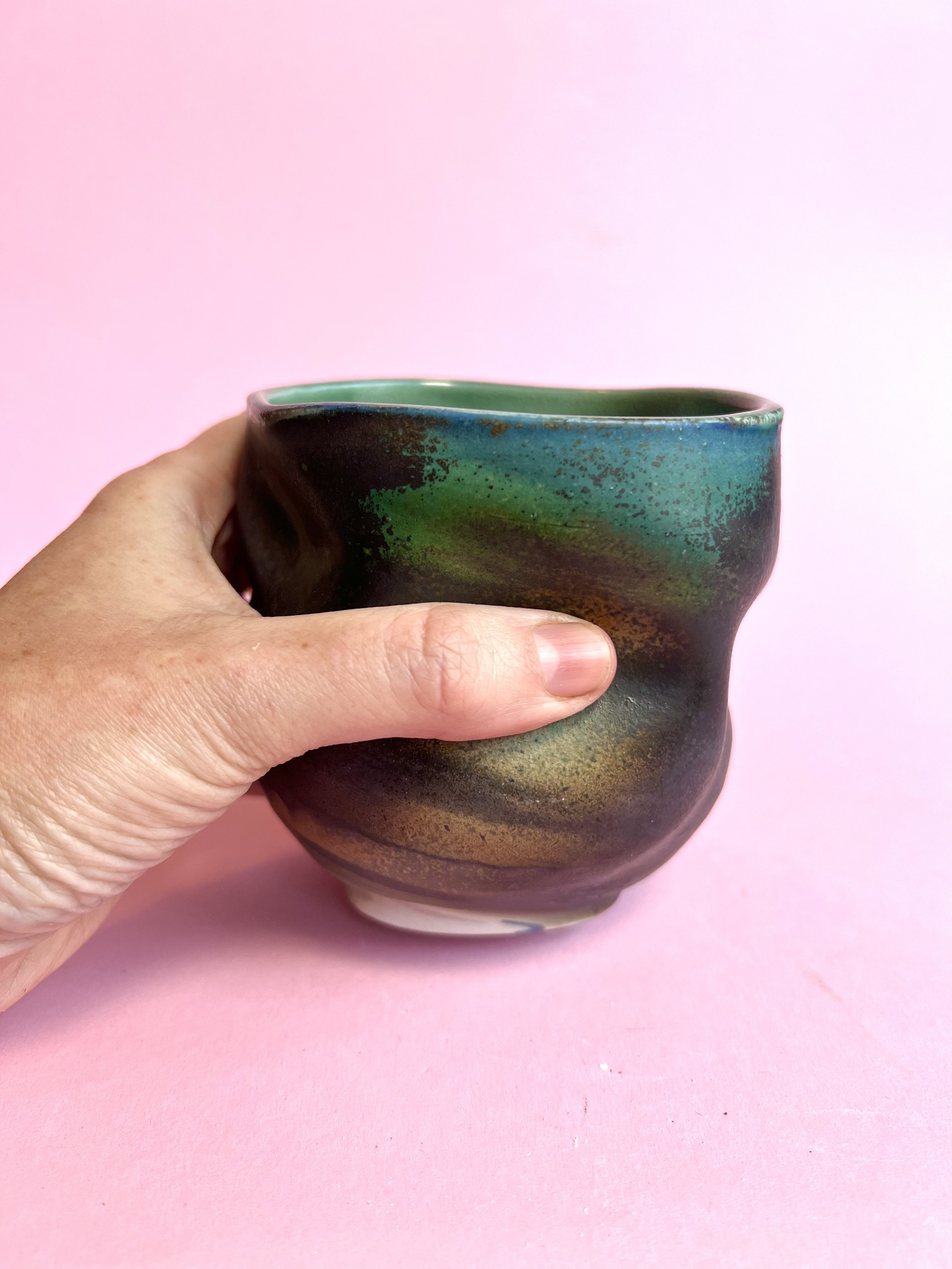 Image 3 of 8
Image 3 of 8

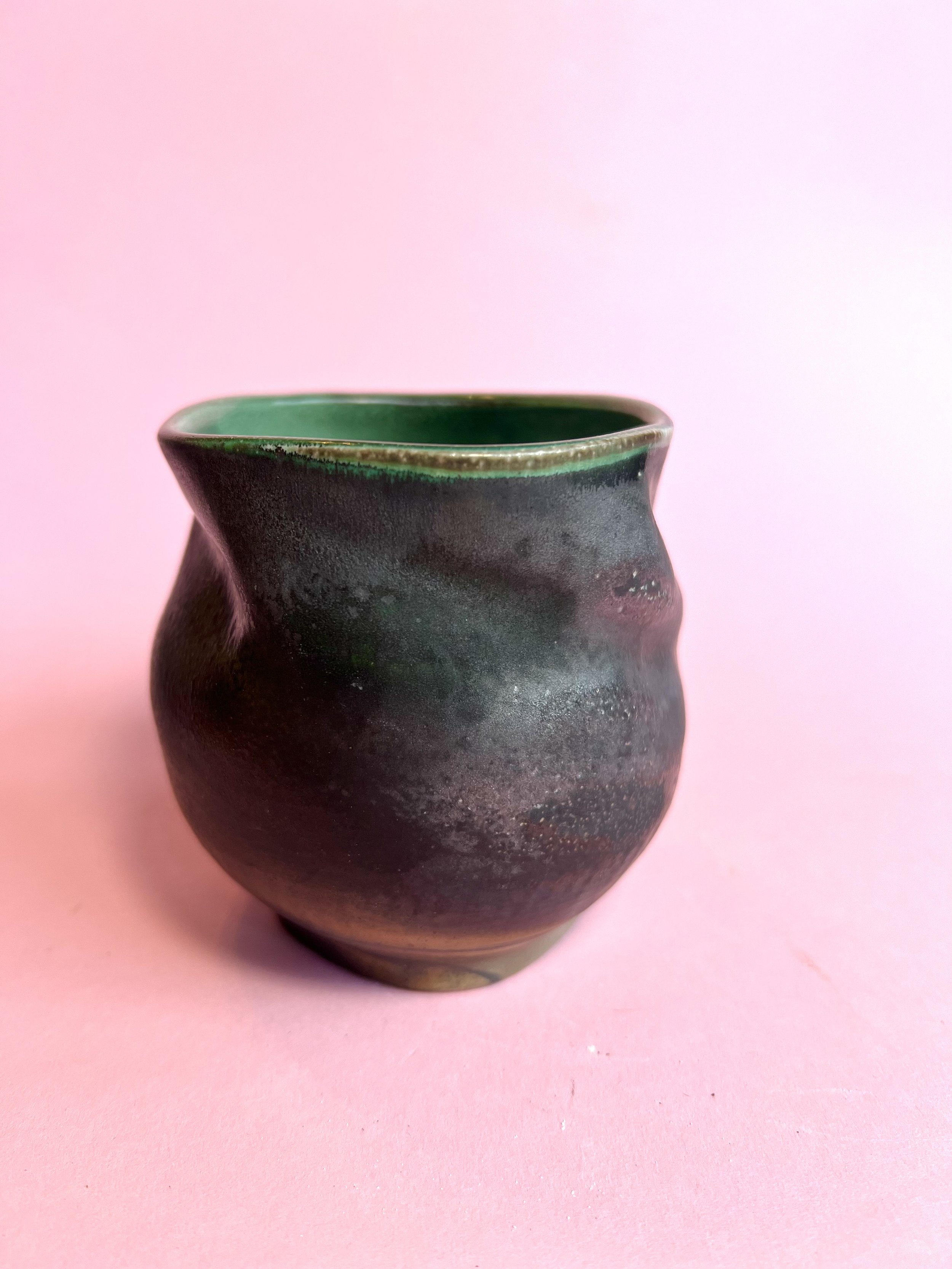 Image 4 of 8
Image 4 of 8

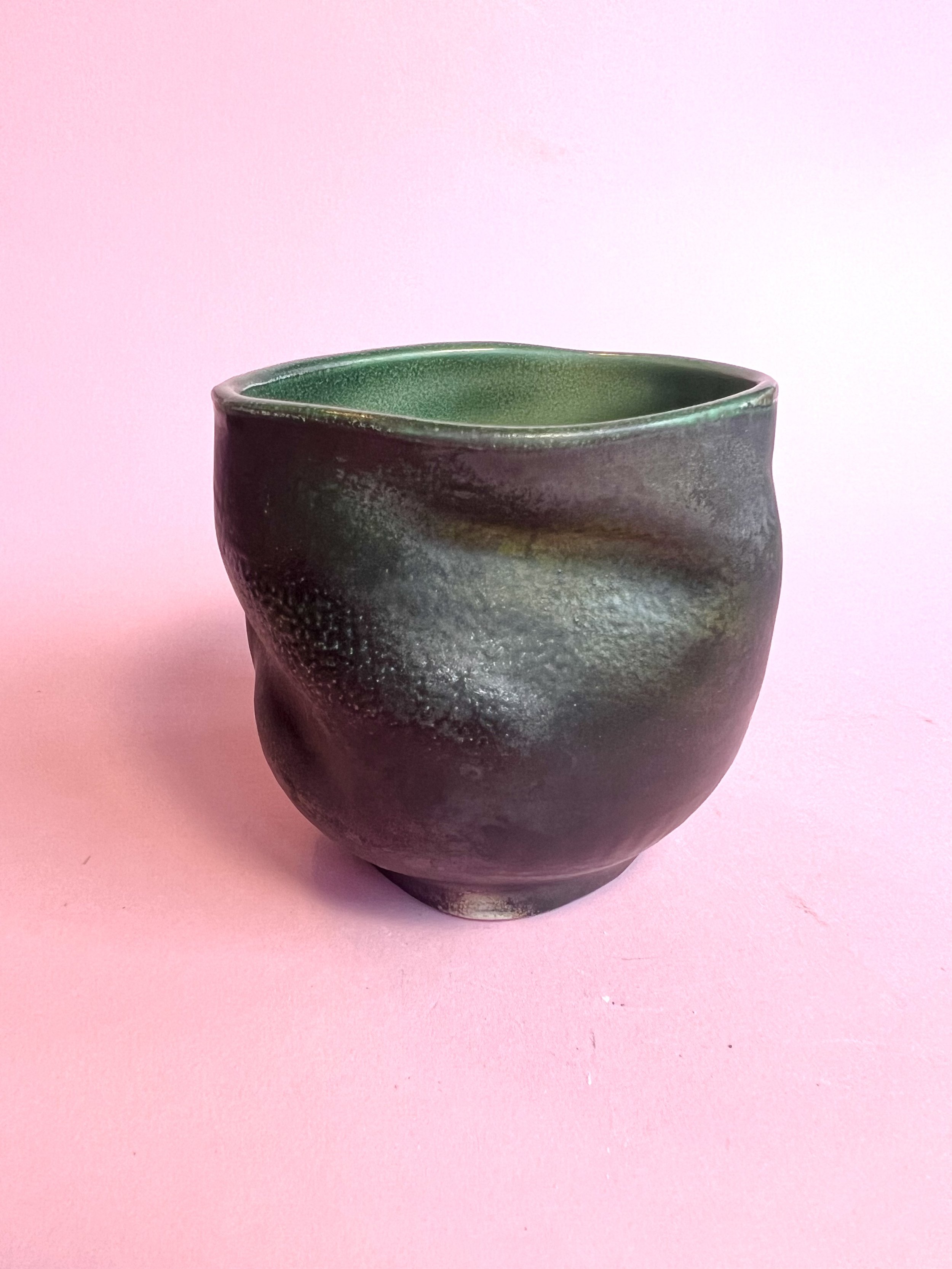 Image 5 of 8
Image 5 of 8

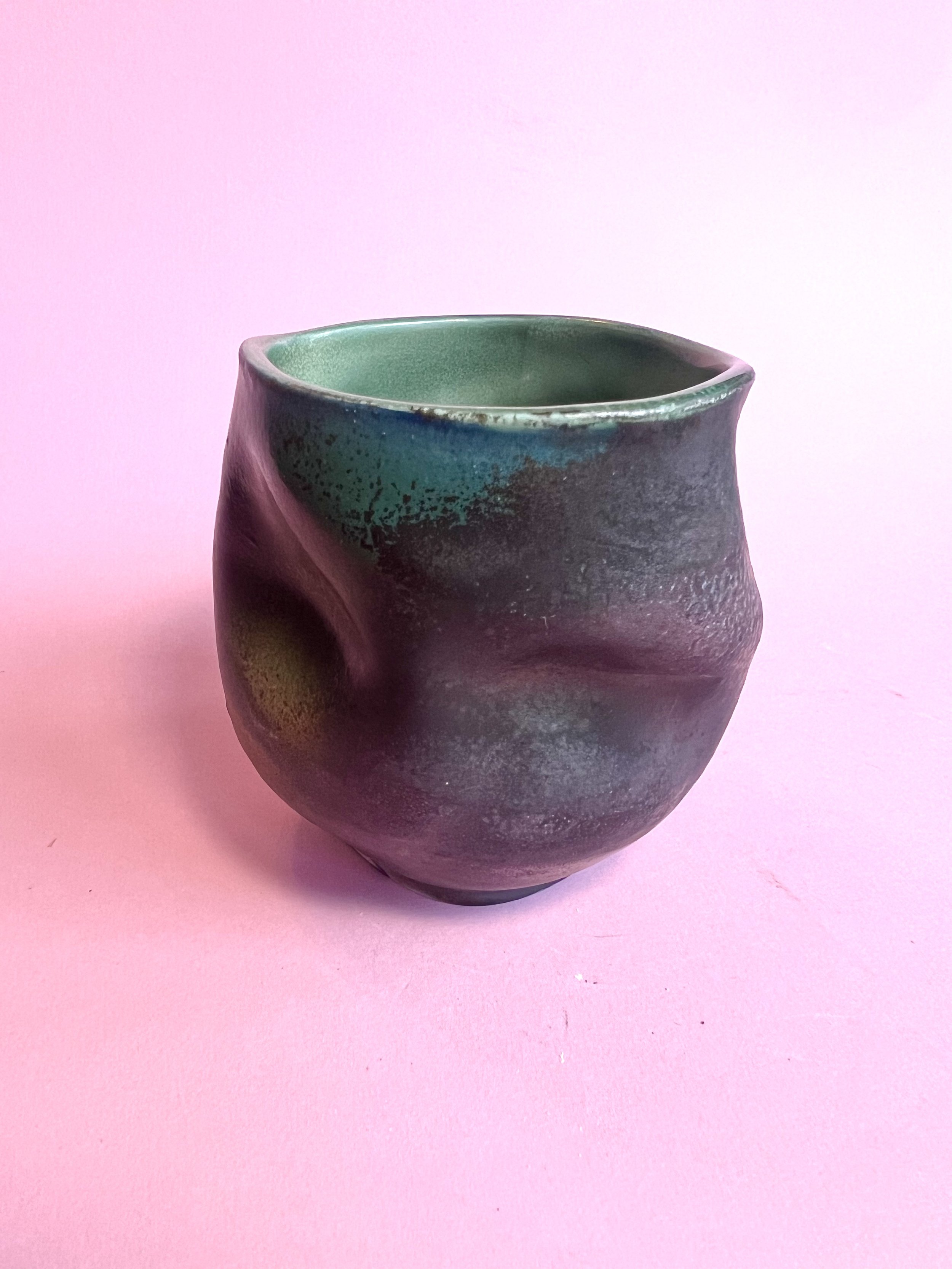 Image 6 of 8
Image 6 of 8

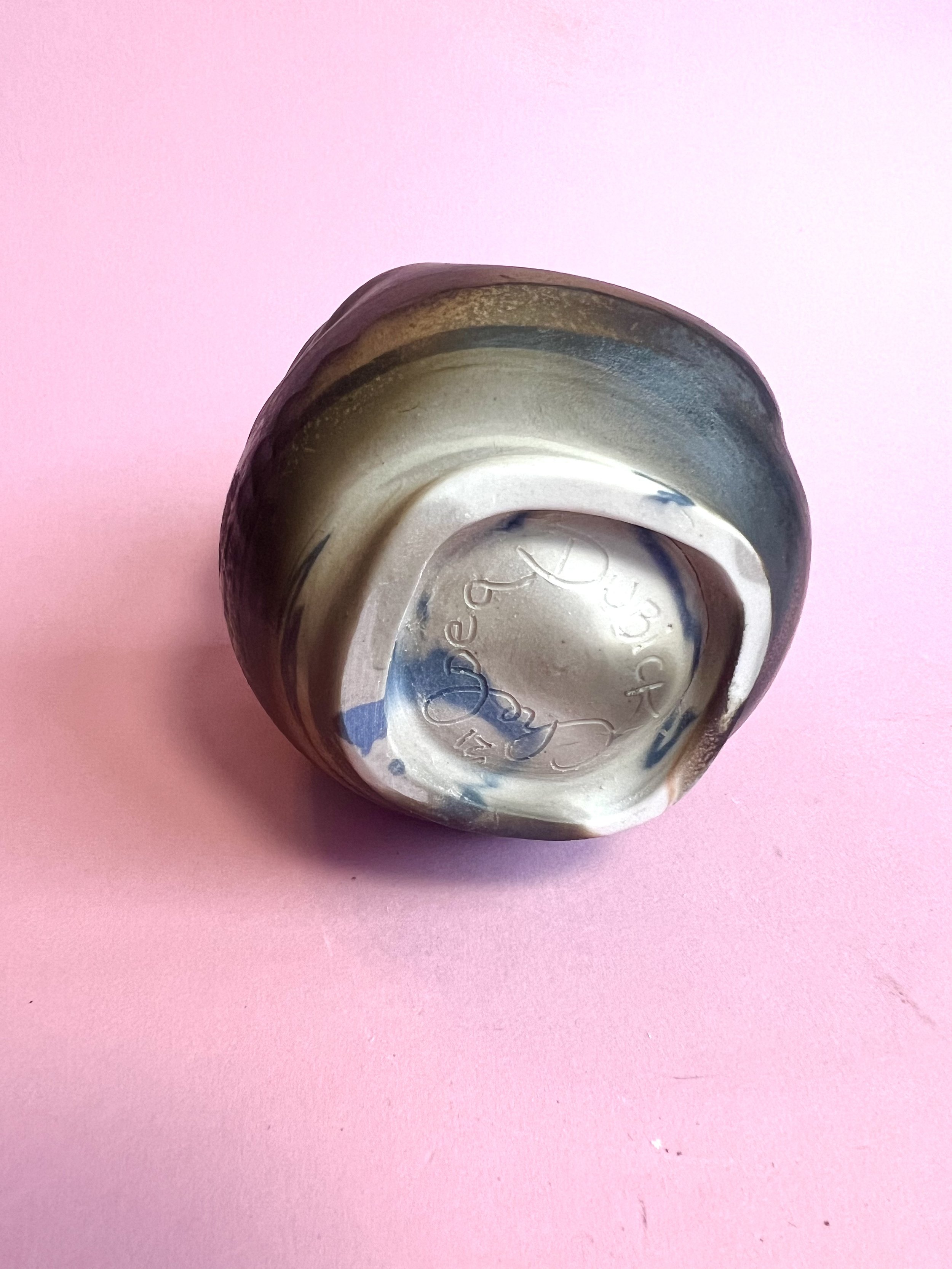 Image 7 of 8
Image 7 of 8

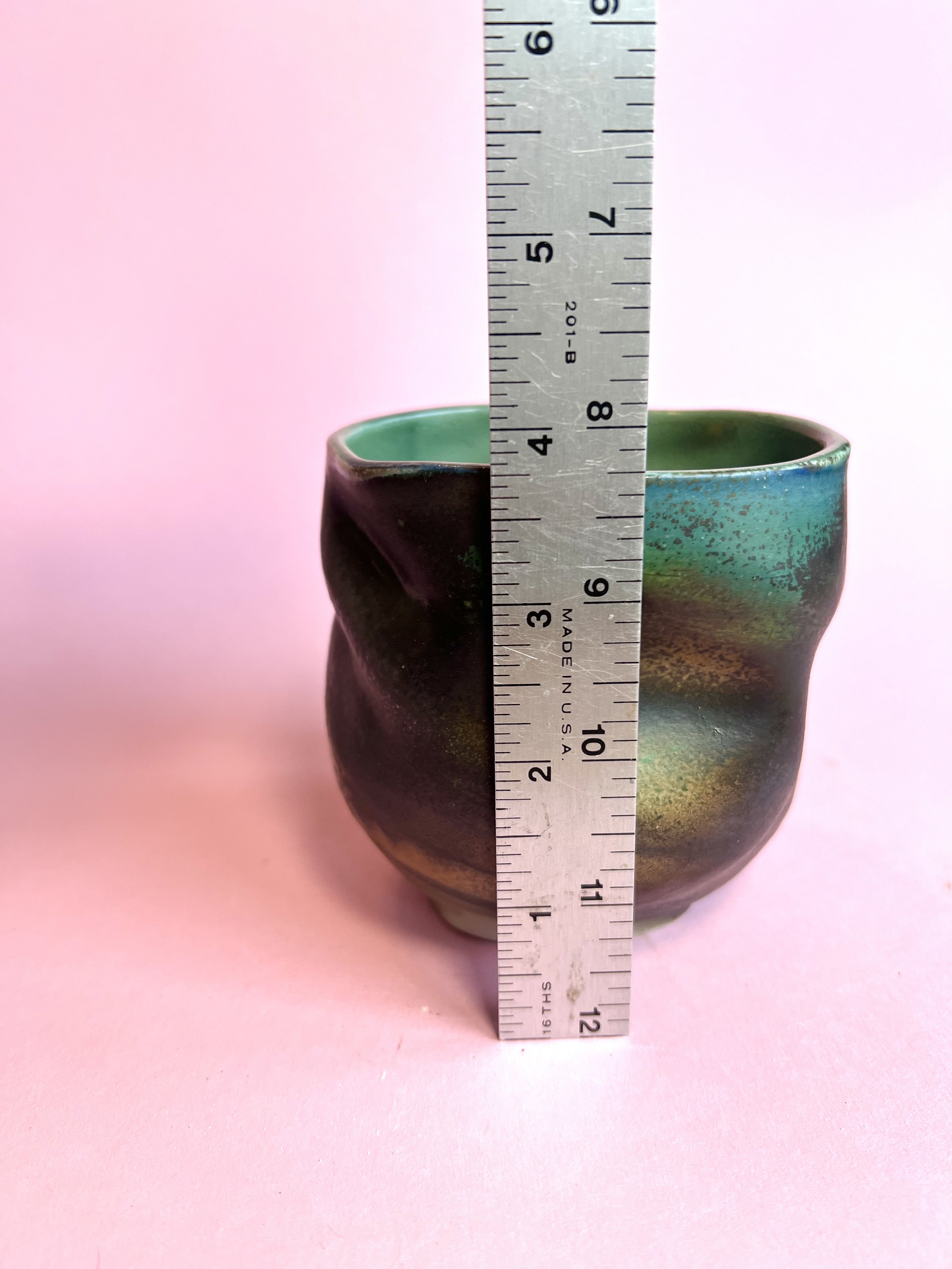 Image 8 of 8
Image 8 of 8









Cup: Smoky Green Soda
Soda firing is so wild. This cup was thrown with marbled clay that had been stained with laterite slip. It was lightly dusted with a green glaze on the rim. When it went into the firing, it looked crisply marbled. The laterite slip with the soda covered the cup in the craziest black smoke effect. I’ve held onto this one for a while, it is truly special. Perfect for any beverage. Dishwasher safe.
Each soda fired piece is one-of-a-kind as atmospheric firings are unpredictable and can yield stunning results. Soda firing takes an enormous amount of time, energy, labor and resources and is usually a community effort. In the soda firing process, soda ash is introduced to the atmosphere of the kiln when it is near peak temperature. The sodium vapor interacts with the clay, slips and glazes to create swirling unpredictable colors that shift and change around the piece. The marks on the bottom are from the wadding used to hold the piece up off the kiln shelf so that glaze drips won’t fuse it to the shelf. They can leave lovely flame marks and are a telltale sign a piece is soda fired, though they don’t always happen, especially in low soda areas of the kiln.
Soda firing is so wild. This cup was thrown with marbled clay that had been stained with laterite slip. It was lightly dusted with a green glaze on the rim. When it went into the firing, it looked crisply marbled. The laterite slip with the soda covered the cup in the craziest black smoke effect. I’ve held onto this one for a while, it is truly special. Perfect for any beverage. Dishwasher safe.
Each soda fired piece is one-of-a-kind as atmospheric firings are unpredictable and can yield stunning results. Soda firing takes an enormous amount of time, energy, labor and resources and is usually a community effort. In the soda firing process, soda ash is introduced to the atmosphere of the kiln when it is near peak temperature. The sodium vapor interacts with the clay, slips and glazes to create swirling unpredictable colors that shift and change around the piece. The marks on the bottom are from the wadding used to hold the piece up off the kiln shelf so that glaze drips won’t fuse it to the shelf. They can leave lovely flame marks and are a telltale sign a piece is soda fired, though they don’t always happen, especially in low soda areas of the kiln.
Soda firing is so wild. This cup was thrown with marbled clay that had been stained with laterite slip. It was lightly dusted with a green glaze on the rim. When it went into the firing, it looked crisply marbled. The laterite slip with the soda covered the cup in the craziest black smoke effect. I’ve held onto this one for a while, it is truly special. Perfect for any beverage. Dishwasher safe.
Each soda fired piece is one-of-a-kind as atmospheric firings are unpredictable and can yield stunning results. Soda firing takes an enormous amount of time, energy, labor and resources and is usually a community effort. In the soda firing process, soda ash is introduced to the atmosphere of the kiln when it is near peak temperature. The sodium vapor interacts with the clay, slips and glazes to create swirling unpredictable colors that shift and change around the piece. The marks on the bottom are from the wadding used to hold the piece up off the kiln shelf so that glaze drips won’t fuse it to the shelf. They can leave lovely flame marks and are a telltale sign a piece is soda fired, though they don’t always happen, especially in low soda areas of the kiln.
